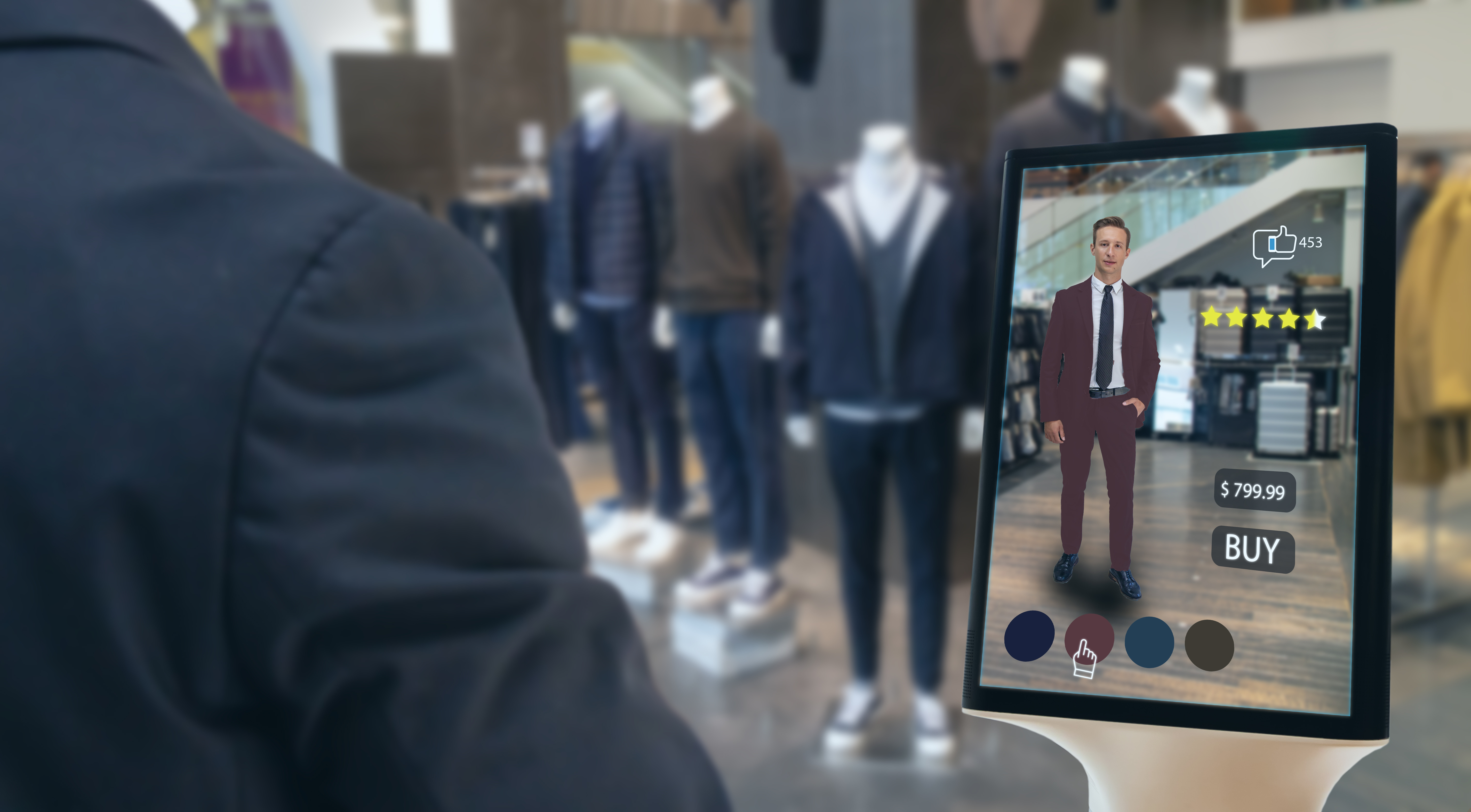Virtual tools like augmented reality have been used for several years by innovative brands, mostly in an effort to provide an exciting and futuristic shopping experience. The focus has been on fun, not function. But as consumers continue to be wary of trying on items in-store, AR is shifting from pure entertainment into real e-commerce utility, in the form of virtual try-on.
A recent consumer survey by AR technology solution Vertebrae found that of the consumers who had tried AR for e-commerce, 76% reported that it improved purchase confidence. While only 39% have currently experienced it in a shopping setting, this number is double that of 2018, and the success rate is high — 68% of users said they are “likely or very likely” to purchase from retailers who offer web-based AR shopping experiences.
“With the pandemic continuing to impact shopping behaviors, it’s clear that consumers are hungry for online experiences that help accurately gauge how items will look in real-life context,” said Vince Cacace, CEO at Vertebrae. “The ability to virtually try on accessories is reassuring to shoppers who don’t want to risk store visits — and who don’t want to deal with the hassle and expense of returning items ordered online that fail to meet their needs.”
This growing interest from consumers is being replicated by brands and retailers, as they discover the conversion potential of the technology. One of the most well-known AR companies in the world, Snap Inc., has been getting more involved in the commercial and e-commerce space, and it reports being regularly approached by companies who are looking to partner on new activations.
Selby Drummond, head of fashion at Snap, explained that there has long been interest in creating these kinds of experiences, but the digitization push of 2020 has also accelerated the adoption of AR. The company regularly listens to requests from brands — and users — and uses these to inspire new projects. Once Snap has perfected its technology, it then reaches out to possible partners who can make the most of it.

The top e-commerce challenges all relate to not being able to physically experience a product: fit, textile and accuracy of online image.
CREDIT: Monopoly919 - Adobe Stock
“We’ll look around at the market and say, ‘Our users are really asking for shoe try-on or nail polish try-on. Are we amazing with this technology?’” said Drummond. “And once we are, then we look around and say, ‘Who are the partners that have been most excited about this and who would our users be the most excited about?’ And then we get this Venn diagram.”
Due to existing customer expectations, an AR filter must still provide entertainment value, particularly as the largest user demographic skews younger — more than half of AR shoppers are under 30 years old, according to Vertebrae. But unlike Snap’s traditional consumer-facing filters, e-commerce try-on experiences are as focused on conversion as they are on entertainment.
“Our regular lenses, they start with ‘what is going to be the most fun, the most engaging, the most creative?’” said Drummond. “We really go the extra mile in making sure that the experience, when it’s about shopping, has utility and is accurate, that it fits your body correctly and shows you what the real in-person experience would be.”
This means being able to map product accurately onto a body part or into an environment, so that shoppers can visualize the item in their real lives, which is a greater challenge than adjusting existing face filters. To that end, Snap has partnered with a number of technology companies to help build out try-on features, such as Wannaby. The company has also made an open source platform available, to encourage greater collaboration and innovation.
Recent Snap collaborations include the Gucci and Hoka One One filters. The company has also launched its new Brand Profiles feature in beta mode, which lets select brands create a permanent home within the Snap app and offer AR Lenses, native commerce stores and content highlights. Participating brands include Dior, Louis Vuitton, Gucci, Prada and Target.